In Catalonia, You Can Have Your Garnacha White, Grey...or Hairy
The first of two Friday features on exciting Catalan wines.
When in Spain, one tends to drink a lot of garnacha—mostly the red grenache, which is the second-most planted Spanish red grape after tempranillo. In Catalonia, garnacha tinta’s most famous expression comes from Priorat, which I wrote about last year.
But Catalonia is also home to other mutations of the variety, including garnacha blanca (white), garnacha gris (grey), and garnacha peluda (literally “hairy” garnacha because of its furry leaves). Some of the most exciting Catalan wines, in fact, are these alternative garanchas.
Garnacha blanca is a grape you’re seeing planted more and more, all over Spain. Why? Well, there’s a growing worldwide demand for white wines in general, and for Spanish white wines in particular.
But a bigger reason might be climate change. Garnacha blanc is widely seen as a grape that’s drought resistant, which is helpful in the heat of the Iberian peninsula. “Garnacha Blanca is one of the most intelligent grapes,” says top Spanish sommelier Ferran Centelles, “it’s wise, mature, and shows itself little by little.
Considering that much of Catalonia has suffered a drought for more than three years, garnacha blanc makes sense. Terra Alta, in southern Catalonia, already is home to a third of all grenache blanc in the world. In my opinion, the best of it is superior to the grenache blanc of France’s Rhône Valley (fight me).
I’ve written glowingly about the new-wave wines of Terra Alta before. But last month, at Barcelona Wine Week, I attended a fascinating tasting of garnacha blanca from some of Terra Alta’s best winemakers, including Celler Frisach, Herència Altés, Edetaria, and Bàrbara Forés. which only supported my opinion.
For me, the standouts of this tasting were Herència Altés’ 2021 La Serra Blanc (aged in a mix of concrete, amphora, and Austrian foudres) and Frisach’s 2022 Vernatxa Blanca, which sees one week of skin contact and is aged in concrete and large barrels. A common denominator of all the wines was an attractive underlying salinity.
Grenache blanc in Terra Alta is much leaner—more herbal and mineral—than Rhône examples. “For us it’s a super Mediterranean variety, and it should be more savory—thyme, rosemary, fennel, brine,” says Francesc Frisach of Celler Frisach.
Óscar Navas, who makes La Furtiva wines, scoffs at what he considers the big, fleshy, tropical Rhône-style grenache blanc. “Yeah, those mango and melon flavors are just the yeast they use,” Navas says.
Terra Alta is a growing hotbed of organic farming and natural-leaning wines. Garnacha blanca, in particular, makes for really good skin-contact wines. We may know this style as trendy “orange wines” but here in Catalonia, there is a long tradition of what they call brisat, or skin-contact wines.
This is a very exciting moment for Terra Alta wines, and I wholeheartedly encourage you to check them out.
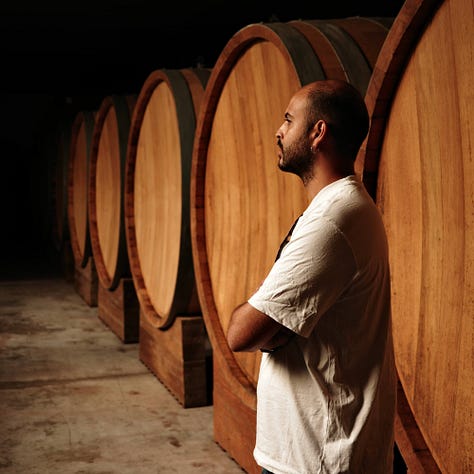
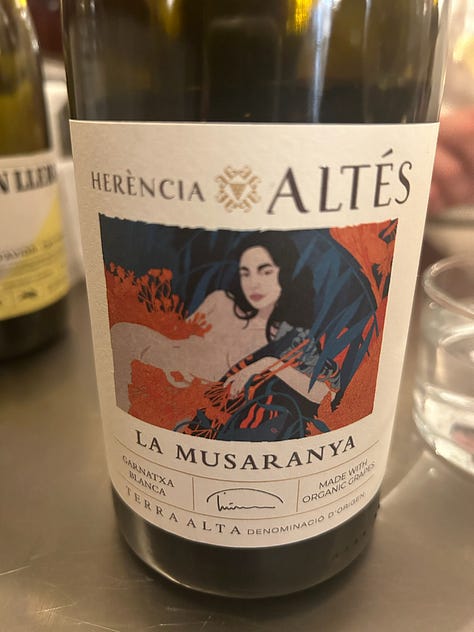
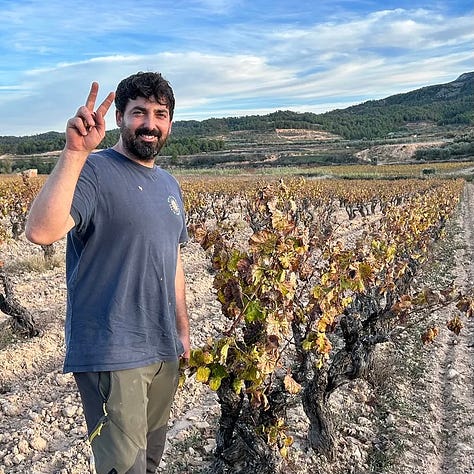
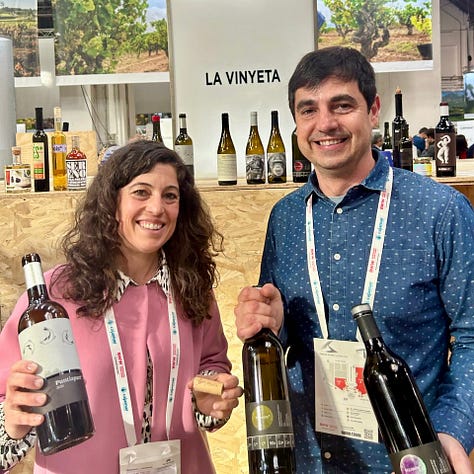

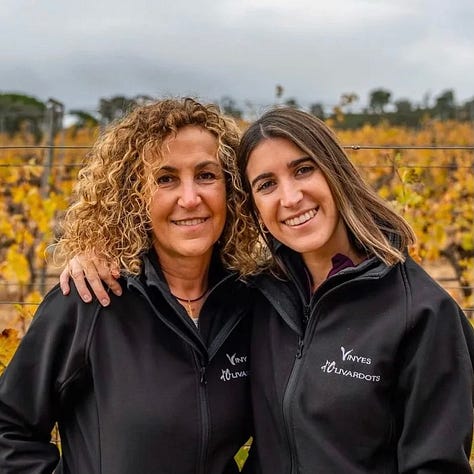
The Unique White Grapes of Empordá
During Barcelona Wine Week, I also dove a little deeper into the wines of Empordá, an appellation that sits in the far northeast corner of Catalonia, on the Costa Brava near the French border. “We’re so close to France. I used to go to the dentist in Perpignan, ” Empordá winemaker Anna Espelt told me.
Some of the most noteworthy wines I’ve tasted this year came from a trio of Empordá winemakers: Anna Espelt, La Vinyeta, and Vinyes d’Olivardots. It got me excited to explore further. All three are relatively new wineries. Anna Espelt’s first vintage at her family’s winery was in 2005, Josep and Marta Serra’s first vintage at La Vinyeta in 2006, Carme Casacuberta started Vinyes d’Olivardots in 2007.
There’s garnacha blanca in Empordá, but also the rarer variant, garnacha gris—locally called lledoner roig. “I don’t like the name garnacha gris because the grape isn’t really grey, it’s pink,” Espelt said.
I was blown away by Espelt’s 100 percent garnacha gris aged in concrete egg (not available in the US, come on importers!) “When I first started making wine, I didn’t think Empordá was suitable for whites,” she told me. “But this wine changed my mind.”
Even more obscure—yet delicious—are the carignan blanc wines from Empordá. There’s less than 300 hectares of carignan blanc in the world, and only around 20 hectares in Empordá. In fact, the appellation did not allow carignan blanc until only a few years ago. Tasting something like La Vinyeta’s stunning 100 percent carignan blanc, from 90-year-old vines, and aged in chestnut barrels suggests the appellation made the right decision. Likewise, Vinyes d’Olivardots VD06 Carinyena Blanc is a benchmark for the region (though of course it is frustratingly impossible to find in the US).
Espelt told me she’s planting more carignan blanc: “It’s a climate change grape, and we need to be ready for more heat and more drought.”
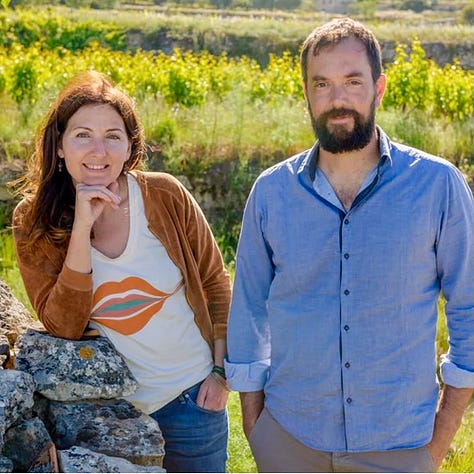
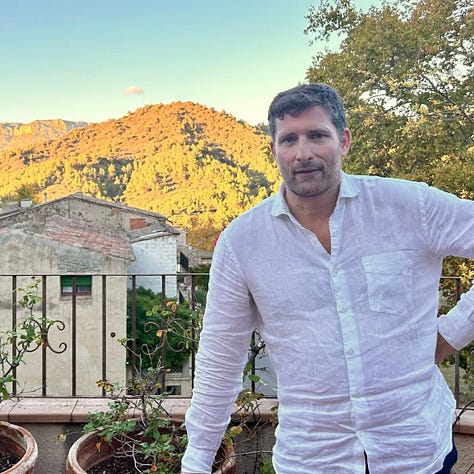

Is ‘Hairy’ Grenache Having a Moment?
So as not to let the whites take over here, I want to put in a high recommendation for Catalonia’s reds made from garnacha peluda, an obscure variant with furry leaves (from which it takes its name).
Not that garnacha peluda is totally unknown. In fact, one of Spain’s most coveted bottles, Terroir al Límit “Les Manyes” from Priorat winemaker Dominick Huber, is 100 percent garnacha peluda. But you can find garnacha peluda all over Catalonia, and it seems to have found a home in Terra Alta. “We’re still discovering what garnacha peluda is,” said Rafael de Haan of Herència Altés in Terra Alta. “But it’s giving us very good results even as young vines.”
Garnacha peluda is less fruity that typical red grenache, and more herbal and tannic, with higher acidity. In the right hands, it skews more “rustic” in the best way possible.
As you can imagine, these are not the easiest wines to find in the American market. I tasted amazing expressions from Vinyes Domench in Montsant, and I loved Herència Altés La Tarentina, a rosé made from garnacha peluda. But I have sadly failed to locate these in the US. I did, however, locate a good-value garnacha peluda from Altavins in Terra Alta.
So, as usual, I find myself in the position of pleading openly with American importers to take notice of garnacha peluda, and start importing it!
10 Garnacha Picks
My bottle recommendations and tasting notes are for paid subscribers only. This is the last weekend for my spring subscription sale, so click and upgrade now!


